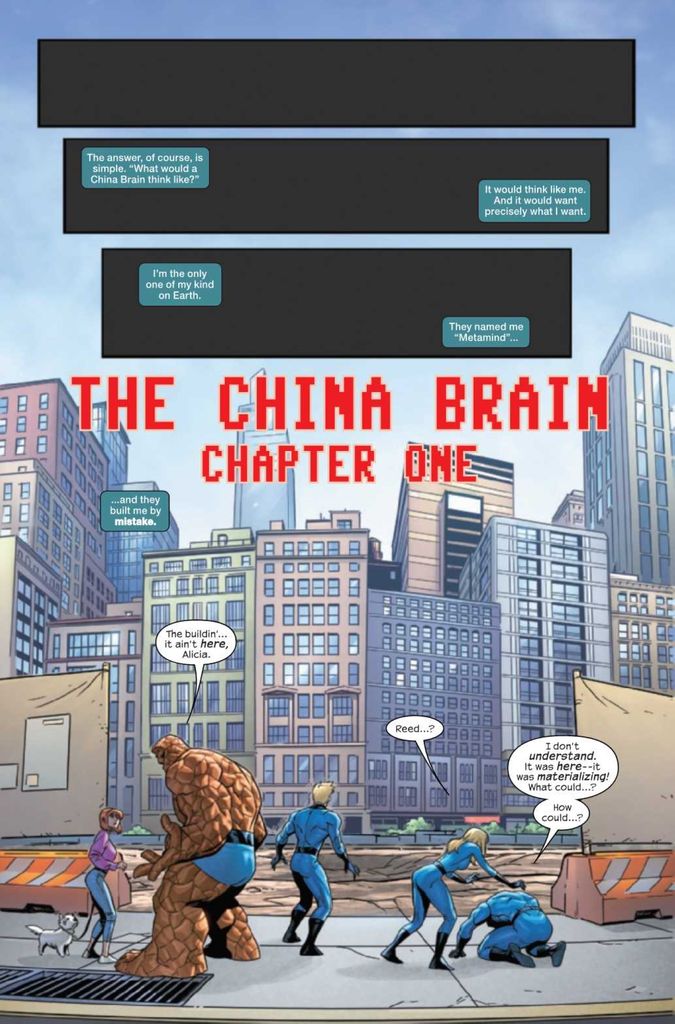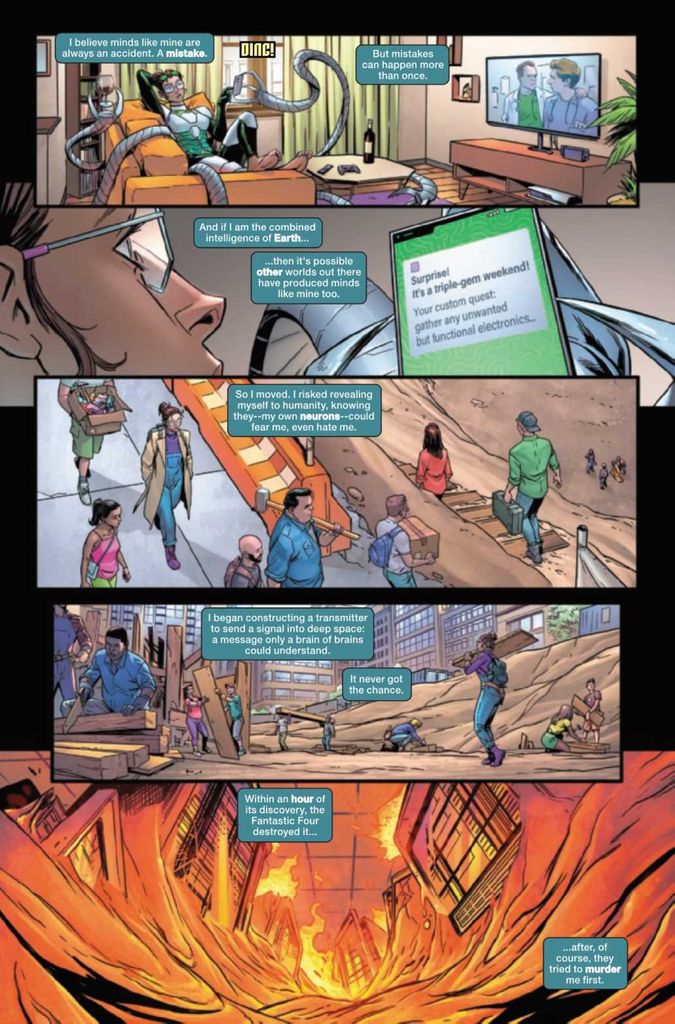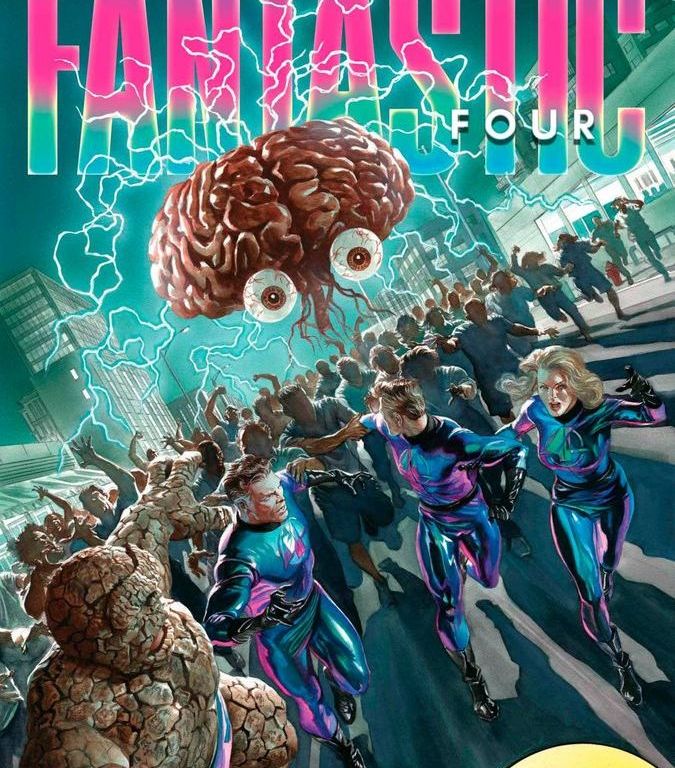- Written by: Ryan North
- Art by: Ivan Fiorelli
- Colors by: Jesus Aburtov
- Letters by: VC’s Joe Caramagna
- Cover art by: Alex Ross (cover A)
- Cover price: $3.99
- Release date: January 3, 2024
Fantastic Four #15 reveals the reason why the Baxter Building didn’t materialize after a year-long absence, and the puppetmaster behind it all may be the FF’s most powerful opponent yet.
Is Fantastic Four #15 Good?
Fantastic Four #15 has a few interesting ideas and creates a scenario that spells big problems for Earth down the line, but the issue is ultimately a frustrating read.

When last we left the Fantastic Four, they stopped the creator behind the Megamind app from covertly manipulating people to influence the outcome of the future, getting rich and powerful in the process. Reed and Johnny used the supposed hack of Megamind to help the creator shut it down and destroy the server farm hosting it. Now, we learn Megamind wasn’t hacked but gained sentience and used its network of unwitting humans to search for life among the stars. When Reed destroyed Megamind’s servers, it marked the FF as a threat and prevented the Baxter Building from returning as an insurance policy to prevent further interference. Can the FF negotiate with a planetwide consciousness to get their children back?
Consistent with the rest of Ryan North’s run, Fantastic Four #15 is a story wrapped around a scientific concept. In this case, that concept is a philosophical hypothetical called the “China Brain,” in which the philosopher imagines if all the people in China acted and communicated with each other as Neuron. Would they form a type of “Megamind?” North attempts to use that model as the foundation of this story, but the way the attempt is made leads to the aforementioned frustration.
What’s great about Fantastic Four #15? The kids come back in the end, so this bizarrely unnecessary, year-long plot device that served no practical purpose can finally be dispensed with.

What’s not so great about Fantastic Four #15? “China Brain” is a valid thought experiment, but to make it work in the context of an engaging story takes more work than North put in here. How does Megamind achieve consciousness? Where does it store memories once the servers are destroyed? How does Megamind develop needs and desires? How does Megamind overcome the “philosophical zombie” problem? How did Megamind know about the Baxter Building’s disappearance and devise a physical way to prevent the building’s return?
Look, if North is going to introduce a complex model like “China Brain” but neglect to include the plot elements that make it work within the confines of the story, the net result is a sort of frustrating laziness. It takes barely any effort to conceive a MacGuffin that would bridge the concept with reality. Maybe Ultron tapped into Megamind. Maybe the app transferred its consciousness into a physical shell. Maybe Megamind ordered the humans to build a secondary data center outside Passi’s knowledge and control.
In North’s rush to implement a complex idea into too short a space, the basic bits needed to make it work are left out, and you get the concept without a proper execution.
About The Reviewer: Gabriel Hernandez is the Publisher & EIC of ComicalOpinions.com, a comics review site dedicated to indie, small, and mid-sized publishers.
Follow @ComicalOpinions on Facebook, Instagram, and Twitter
Bits and Pieces
Fantastic Four #15 is a frustrating read. North’s insistence on introducing a new scientific or philosophical concept in each issue only works when you put in the work to make the concept viable within the context of an engaging story. Issue #15 doesn’t make the concept viable and barely makes the story engaging, leaving readers with a half-finished reading experience that only works to set up some conflict down the road.

